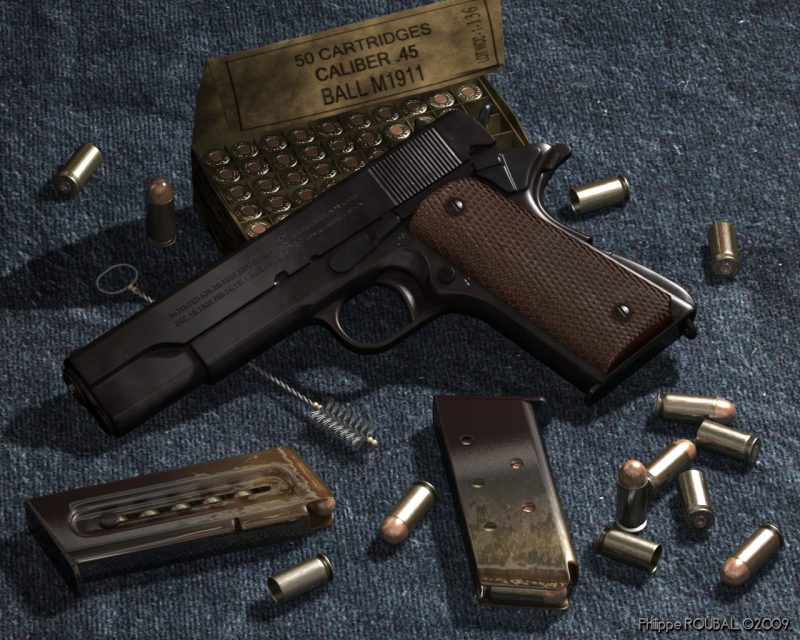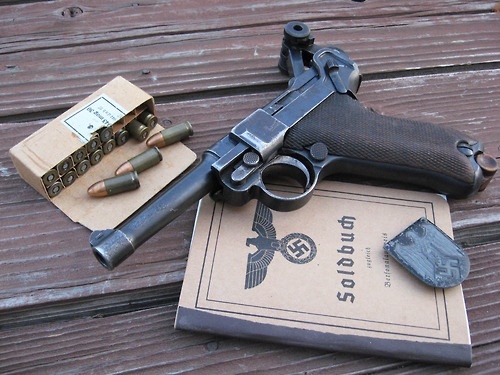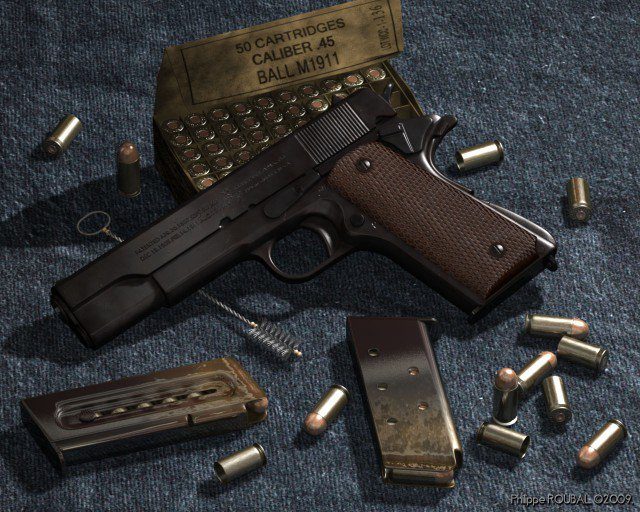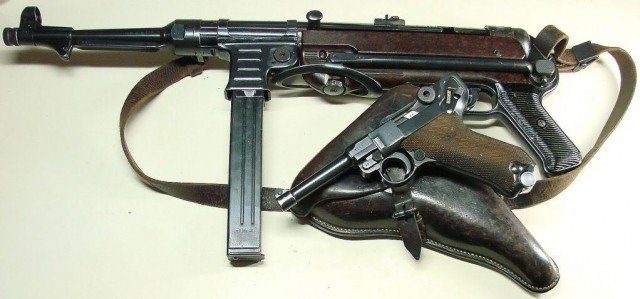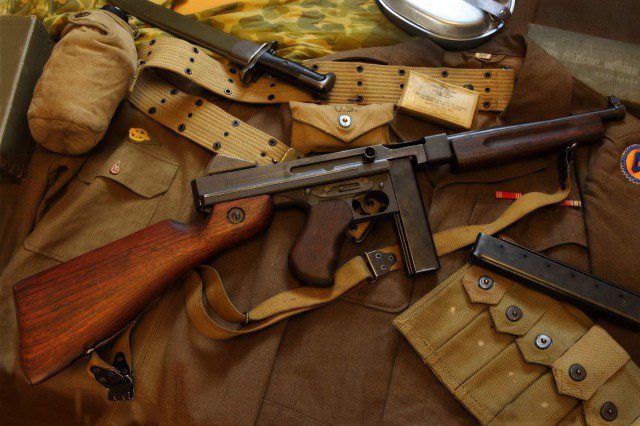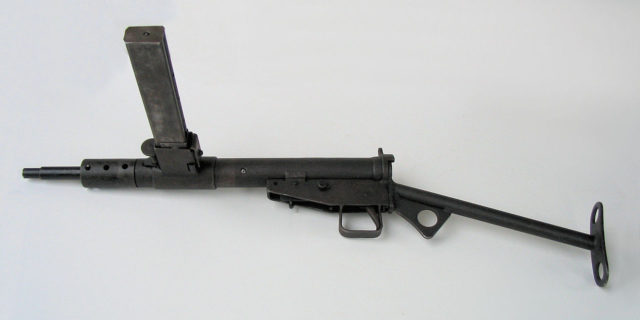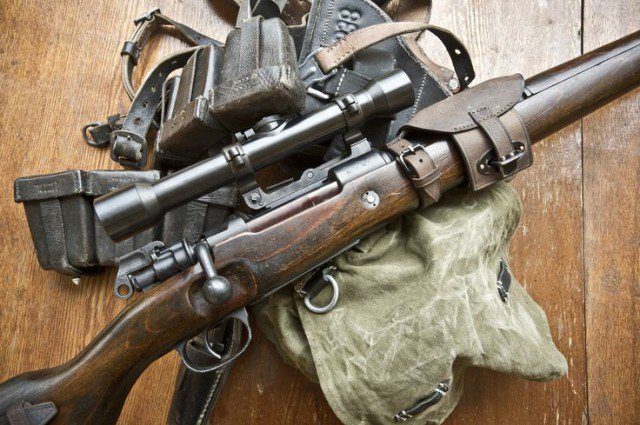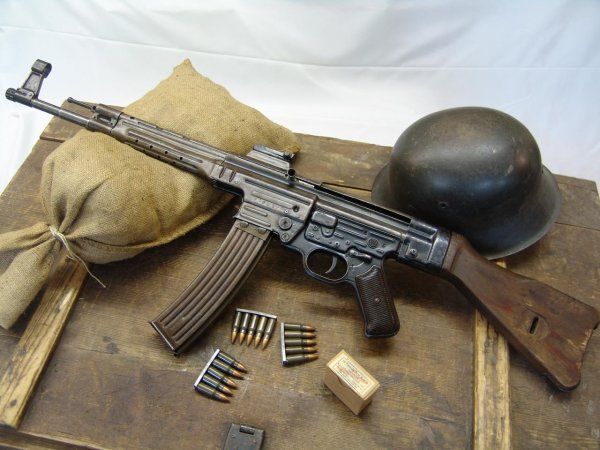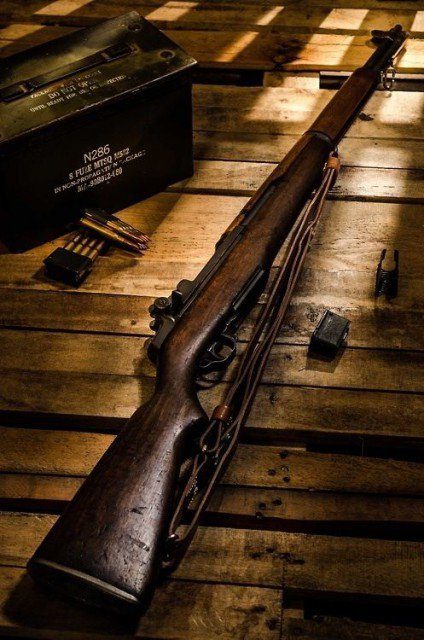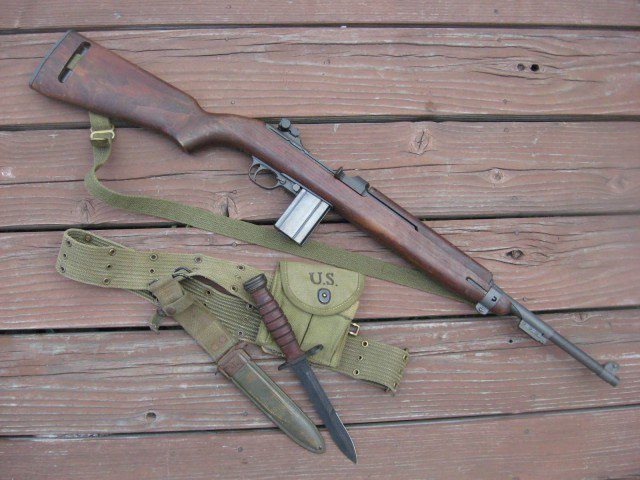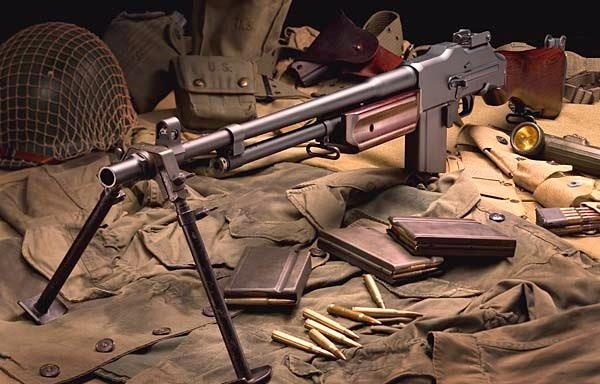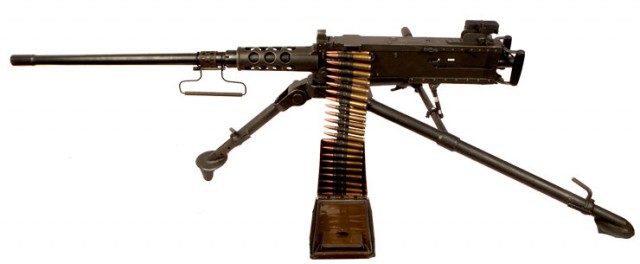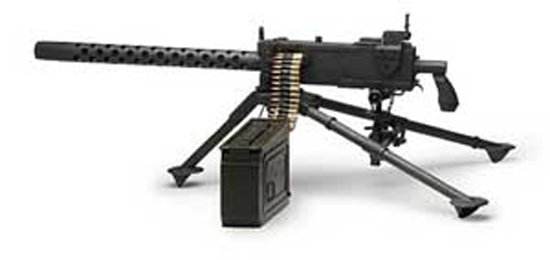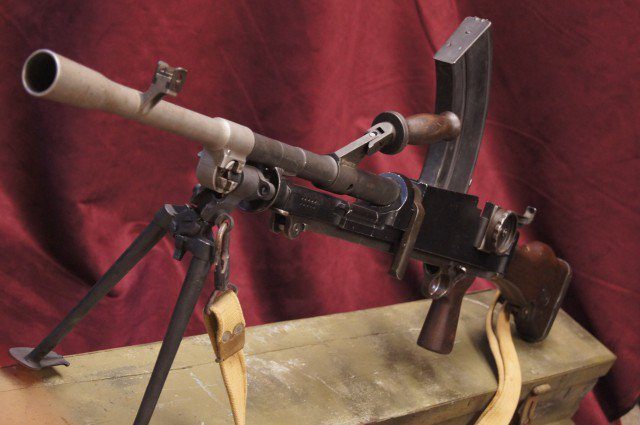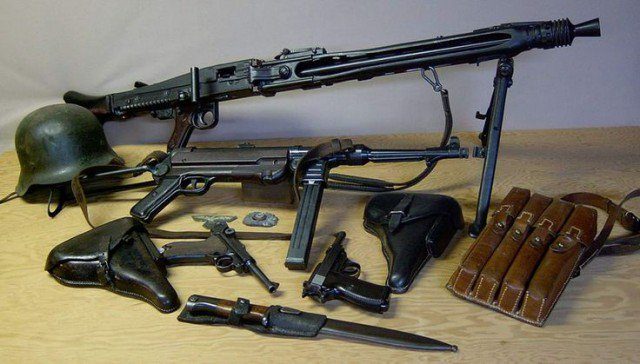We know that millions of weapons were made during WWII – but do we know the cost of their production? This isn’t a bulletproof guide, as the cost of many weapons changed throughout the war, but these figures give us a rough idea.
Handguns
Luger P08: $13
The design of this toggle-locked recoil-operated semi-automatic pistol was patented by Georg J. Luger in 1898. In 1900 production started by a variety of German arms manufacturers and it was quickly adopted by the German armed forces and, in 1900, by the Swiss army.
The use of the Luger by the Germans in World War I and World War II made the Luger made it famous and, especially in the Second World War, it was a war-trophy highly sought after by many allied soldiers.
M1911 .45: $15
One of the most popular handguns ever made, the Colt 1911 set the standard for the 20th-century pistol.
The standard issue sidearm for U.S. Armed Forces from 1911 until 1986, the Colt 1911 has even been modified and for use in various service branches to this day.
The Colt 1911 was developed by Browning during the Philippine-American War because troops needed more stopping power from their weapons. The .45 caliber rounds of the Colt offered just that. It was a reliable and powerful sidearm for U.S. infantry during World War II.
SMGs
MP40: $24 (1942)
The MP40 submachine gun was made to use with the 9x19mm Parabellum cartridge. This submachine gun was developed in Germany by the Nazis and the Axis powers used these guns extensively throughout World War 2.
These guns were designed by Heinrich Vollmer in 1938, he got the inspiration for them from the MP38 (its predecessor). The MP40 was used throughout the German army, by paratroopers, platoon leaders, infantrymen and squad leaders on both the Western and Eastern fronts.
It was designed with more modern features that were far more advanced than anything that had come before; this made it hugely popular with both German soldiers and countries around the world (following the end of the War). It was commonly called the ‘Schmeisser’ by the Allies; this was an incorrect name as Hugo Schmeisser had zero involvement in this gun, neither in its design nor in its production.
Thompson SMG: $209 (In 1939) / $70 (in 1942) / $45 (In 1945)
The Thompson submachine gun or M1921, was the very first model produced and this was done in 1921 by Colt. The weapon was super impressive for its time and could easily fire 800 rounds per minute using .45 caliber bullets. A total of 15.000 guns were produced. Sales did not go well even though the gun was an impressive weapon to use in these times.
A better, more improved version was created to try and boost sales and create more demand – this was the M1928, and was considered one of the best guns made to date.
Mk II Sten: $11 (1942)
The British Sten Gun was a sub-machine gun, created out of sheer necessity. After losing huge amounts of equipment during the evacuation of Dunkirk and now with the looming threat of German invasion, the United Kingdom needed some strong infantry fire power, quickly and cheaply.
To that end, the Sten Gun fulfilled its purpose. Its simple design was mass-produced and sub-contracted to factories all over England. Though the finished project was often rough and was plagued by frequent reports of misfiring, it was the punch Britain needed. It was so simple to build that many countries and partisan forces started producing their own, including Polish Resistance which made at least 2,000.
Rifles
Mauser 98k: $28 (Pre-War price)
The German Mauser K98k was adopted by the German Army in 1934. It is a controlled-feed, bolt action short carbine, relied upon for its accuracy and range. It could fire up to 1090 yards. Its magazine takes five 7.92×57mm cartridges. Each rifle was equipped with a cleaning rod fitted through the bayonet stud. The Mauser was used by all branches of the armed forces throughout World War II. The Red (Soviet) Army would often use captured Mausers.
StG 44: $26 (1944)
After several years of rejecting the idea of a new automatic or semi-automatic weapon, Hitler asked his top commanders on the Eastern Front what they needed – and their answer was that they needed this type of firearm. So the Germans developed the Sturmgewehr 44, better known as the StG 44, in the early 1940s and began mass production in 1944.
In one of their final attempts to turn the tide of the War back to their favor, the Wehrmacht mass-produced over 425,000 StG 44s. The Sturmgewehr or storm rifle (assault rifle) in English, was the first custom made and a mass-produced assault rifle. This rifle drastically changed warfare forever, although that change didn’t come in time for the German Wehrmacht.
M1 Garand Rifle: $83 (1942) / $31 (1945)
The M1 Garand rifle is a 0.30 caliber semi-automatic US rifle designed in 1928 by Canadian-American firearms designer John Garand. It was in service as the standard US service rifle from 1936 to 1957. Thousands of these rifles were also lent or supplied to the allies of United States as foreign aid.
The M1 was still in use in large numbers until 1976 and today it is mainly used for drill purposes or by collectors. From 1936 to 1957 and in the 1980s total 6.25 million M1 Garand rifles were produced and per unit cost was $85 during WWII.
M1 Carbine: $45 (1942)
The most used gun by US forces during World War Two was the M1 Carbine. Made from 1942 to 1945 the M1 Carbine was provided to troops who didn’t need a full-sized rifle, particularly support troops. It was a better choice over all other pistols and hand uns, except at short range.
The M1 Carbine was originally designed and made for airborne forces, it had a pistol grip and a folding metal stock and was made by a Inland. Around 140,000 were made for World War Two alone
M1918A2 BAR: $319 (1945)
The 1918 Browning Automatic Rifle was the light machine gun standardized by the U.S. Army in 1938 and used up until Vietnam, seeing extensive use with U.S. World War II infantry. Though the U.S. never developed a light machine gun in the Second World War as practical and powerful as the British Bren or German MG34, the M1918 BAR still did the trick.
Weighing between 13 and 24 pounds, depending on the model, and firing .30-06 rounds from a cartridge that usually held twenty, the BAR was originally indoctrinated as a rifle support weapon. When the U.S. began exchanging fire with German troops armed to the teeth with automatic weapons, military doctrine switched to focusing rifle squads around at least two BARs, as the center of their tactics.
Machine Guns
M2 “Ma-Duce” .50 BMG: $1560 (1945)
The original name of the .50 Caliber Machine Gun is the M2 Browning. The prototype was developed by John M. Browning in 1918 right after WWI when the world was saying farewell to trench warfare.
The machine gun has been in production since 1921 and more than 3 million units have been produced to date, currently by a plethora of companies most notably General Dynamics, US Ordnance, Manroy Engineering UK, Sabre Defense, etc.
The M2 is transportable by a crew thanks to a back plate with a spade, trigger, grips and latch release. Furthermore, the gun comes with a flash suppressor and spare barrel assembly making it a portable machine gun compared to other heavy weapons.
The M2 has been used by the United States in almost all its conflicts since its production. The long list includes WW2, Korean War, Suez Crisis, Vietnam War, Iraq War, Invasion of Panama, Somali War, War in Afghanistan, etc.
M1919A4 Machine Gun: $579 (1945)
The .30 caliber medium machine was an air-cooled development of the John M. Browning-designed M1917, the standard US machine gun of World War I. It was in use during World War II, the Korean War, and even up to the Vietnam War as an infantry company light machine gun. It was also used on vehicles, aircraft and used as anti-aircraft machine gun.
Rechambered for the new 7.62×51mm NATO round, the M1919 remains in service to this day!
Bren Gun: ~$180 (1941)
The British light machine gun was the Bren Gun. It was developed in the 1930s and continued to be used by the British Army until 1992. It is most well known for its use in World War II, when it was the main British light machine gun, but it was also used in the Korean War and other conflicts, including the Falklands War of 1982.
MG 42: $100 (1944)
The MG-42 is a Mauser machine gun and uses the Mauser cartridge (7.92x57mm) and is suited for general-purpose. It was created in Nazi Germany and was heavily used by the Waffen-SS and Wehrmacht at the end of World War 2. It was initially made to replace the Mg-34 as it was cheaper to manufacture as well as quicker to make too, but in the end, both machine guns remained in production throughout the War.
The MG-42 machine gun has been proven to be reliable, durable, simple and easy to use and is most handy in that it can produce a higher than usual volume of suppressive fire. It could average between 1,200 and 1,500 rounds per minute which was fantastic for this type of gun.
This gun was still being used beyond the War ending and was the basis for the later MG1, which was almost identical to the MG-42, which took 7.62x51mm NATO chambers. This then evolved to the MG1A3 and then eventually the Bundeswehr MG-3.
MG34: $131 (1942)
This MG-34 is a recoil-operated machine gun that is air-cooled and German. It was first introduced in 1934 and sent to many units in 1936. This gun utilizes the Mauser cartridge (7.92x57mm) and is considered to be the first machine gun for general-purpose in the world.
This was a versatile gun and possibly the most advanced one in its time. It had outstanding mobility, being light enough for one man to carry and its rate of fire was tremendous (up to 900 rounds per min).
This gun was issued in massive numbers after Hitler’s repudiation, in 1936, of the Versailles Treaty and was first tested in combat when German troops assisted Franco’s Nationalists during the Spanish Civil War.
